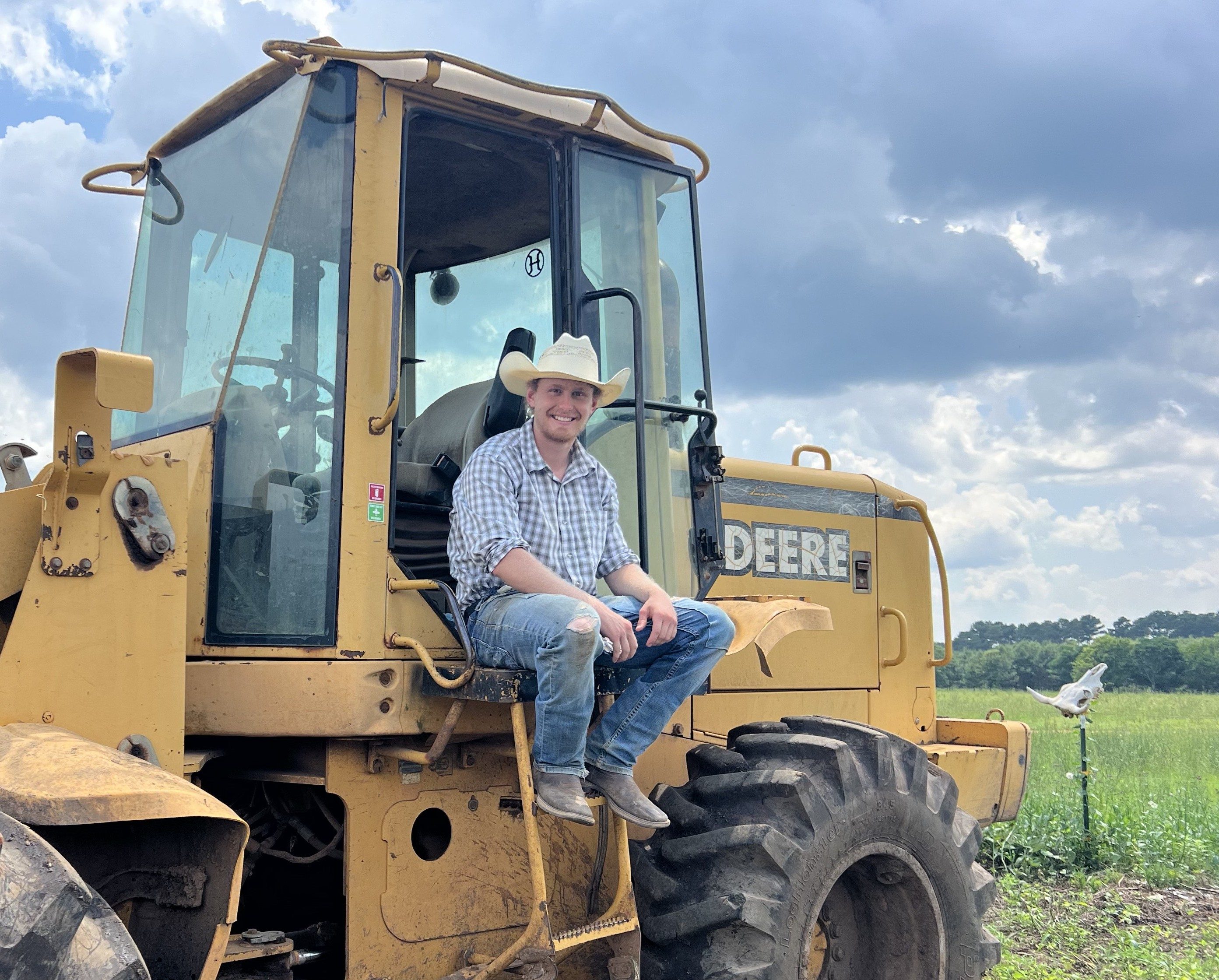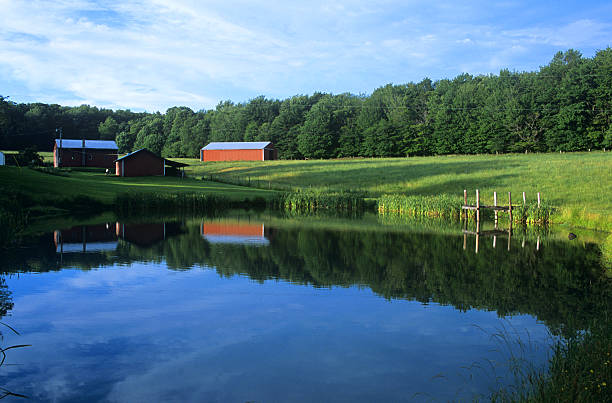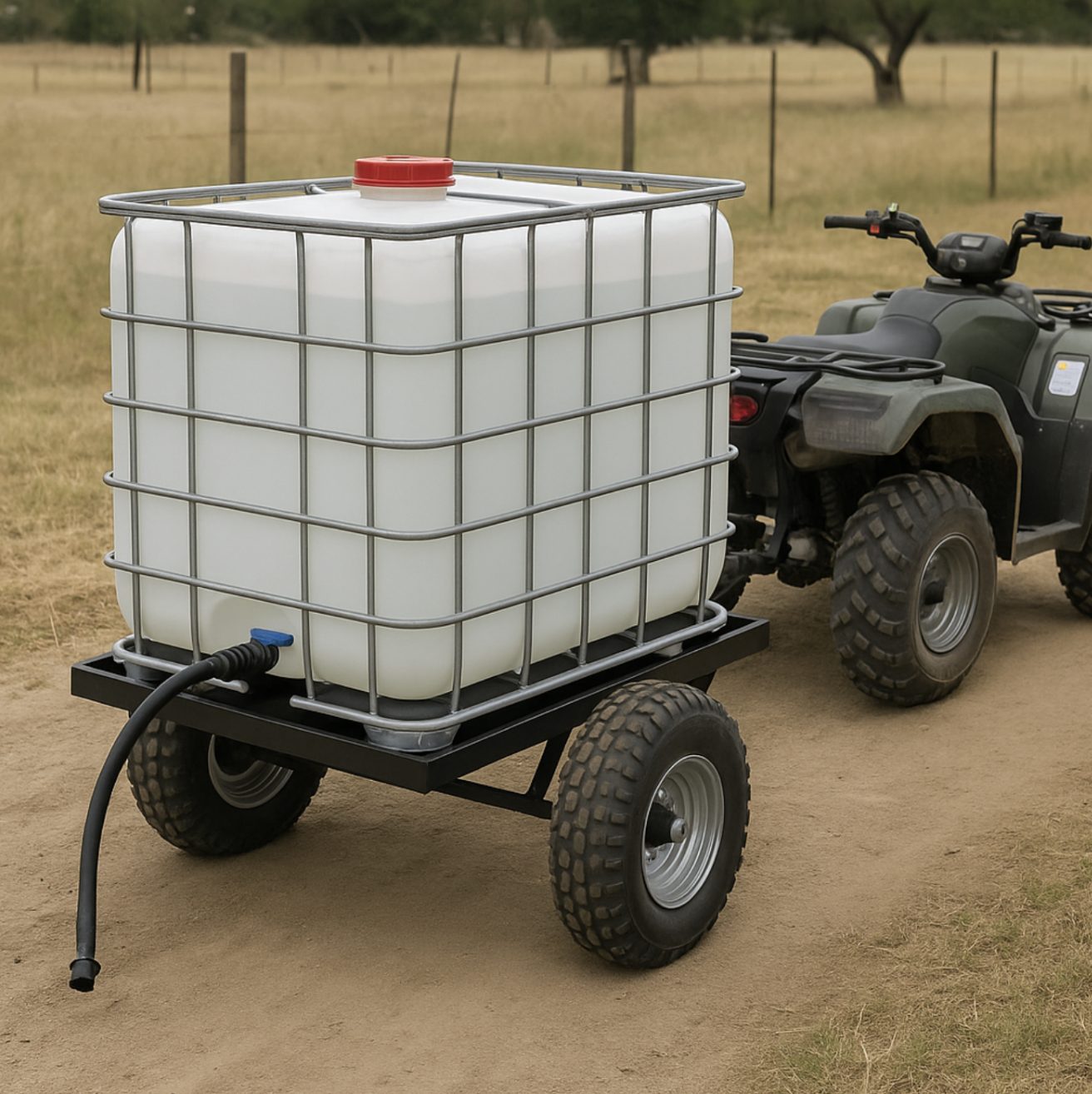TheFarmersDigest
The Farmers Digest
Jun 3, 2025

Editor
Chris Pigge

Editor
Miles Falk
Getting Water to Every Paddock

The Economics of Getting Water Right
Moving cattle and sheep through paddocks offers tremendous benefits for both livestock and pasture health, but water access represents both the biggest opportunity for profit improvement and the easiest way to destroy the economics of rotational grazing systems.
A well-designed water system can save farmers countless hours in daily management while eliminating ongoing equipment and energy costs. Conversely, an inadequate system can cost farmers hours in daily labor and thousands in equipment costs to fix or constantly modify poorly planned infrastructure.
The difference between success and failure often comes down to whole-farm planning. Operations that integrate water system design with paddock layout, terrain features, and management intensity from the beginning create efficient systems that support profitable grazing. Those that add water access as an afterthought typically struggle with expensive retrofits, excessive labor demands, and operational headaches that undermine the entire grazing program.
The choice between different watering approaches affects far more than daily convenience—it determines infrastructure costs, ongoing operational expenses, labor efficiency, and ultimately whether rotational grazing becomes a profitable management tool or an expensive burden.
System Types: What Are Your Options?
Successful rotational grazing water systems fall into three main categories, each with distinct economic and operational trade-offs.
Centralized Water Systems
Centralized systems provide water access from fixed locations that serve multiple paddocks simultaneously. This approach typically involves positioning water sources at paddock corners or creating water lanes that connect paddocks to central watering points.
The primary advantage lies in infrastructure efficiency—one well, pump, and distribution system can serve multiple grazing areas without duplicating equipment. According to research from the University of Minnesota Extension, centralized systems work particularly well for smaller operations where paddocks can be arranged around natural topography features.
However, centralized systems create significant long-term trade-offs. Cattle naturally develop well-worn paths along frequently traveled routes to water sources. These heavily trafficked lanes become compacted and eventually lose all vegetative cover, creating permanent bare corridors that require ongoing maintenance and reduce overall pasture productivity. The economic impact compounds over time as these travel lanes expand and require reseeding or alternative management approaches.
Mobile Water Systems
Mobile watering involves moving water sources along with livestock as they rotate through paddocks. This can range from simple tanks on trailers to sophisticated portable systems with flexible supply lines.
Mobile systems offer maximum flexibility in paddock design since water access does not constrain the shape or size of grazing areas. Research from multiple university extension services shows that mobile systems work best for operations using intensive rotational grazing with frequent moves.
The time required for moving water equipment varies dramatically based on system design. A well-designed mobile system using gravity feed to a wheeled waterer connected via long hose can be moved in minutes using an ATV. Poorly designed systems requiring tank refilling and multiple connections can consume substantially more time.
Hybrid Systems
Hybrid approaches combine elements of both centralized and mobile systems to balance infrastructure costs with operational flexibility. A typical hybrid system includes several wells or water sources distributed across the property, with portable equipment that moves between these fixed points.
According to research from the University of Florida Extension, hybrid systems often prove most practical for medium to large operations where pure centralized or mobile approaches become less feasible economically.

Gravity vs. Pumps: The Fundamental Choice
The choice between gravity-fed and pumped systems represents a fundamental decision affecting both initial costs and ongoing operational expenses.
Gravity-Fed Systems: Free Energy Forever
Gravity-fed systems harness natural elevation differences to move water without mechanical pumps or ongoing energy costs. These systems require a water source positioned at least 10-15 feet above the point of use to generate sufficient pressure for effective distribution.
The complete absence of moving parts dramatically reduces maintenance requirements and eliminates ongoing energy costs. Studies from various agricultural institutions demonstrate that gravity systems operate reliably for 15-20 years with minimal maintenance, significantly outlasting pump-dependent alternatives.
Every 2.31 feet of elevation drop generates approximately 1 PSI of water pressure. Most effective gravity systems require minimum pressures of 5-10 PSI at delivery points to maintain adequate flow rates for livestock access.
The limitation involves terrain requirements. Effective gravity systems demand sufficient elevation differences, which may require creating artificial elevation through elevated storage tanks or leveraging natural topography.
Pumped Systems: Flexibility with Ongoing Costs
Pumped systems use mechanical equipment to move water from sources to distribution points, offering greater flexibility in system design since they overcome elevation challenges and transport water over longer distances.
For pumped systems, well capacity and pump sizing must match peak demand requirements. A typical operation requires pump capacity of 10-15 gallons per minute per 100 head of cattle to handle peak drinking periods effectively. Undersized pumps create bottlenecks that force livestock to wait for water access.
Solar-powered pumps have gained popularity due to their ability to operate without electrical grid connections. Research from the University of Nebraska indicates that solar pumps should be sized to deliver daily water requirements within 6-8 hours of peak sunlight to account for weather variations.
Electric submersible pumps provide the most reliable high-volume delivery when grid power is available, typically delivering 20-50 gallons per minute consistently.
Understanding Flow Rates and Pipe Sizing
Proper system sizing requires understanding the relationship between pipe diameter, pressure, and flow capacity.
Pipe diameter critically affects flow capacity in both gravity and pumped systems. A 1-inch diameter pipe can deliver approximately 25-30 gallons per minute under typical pressure conditions, while a 2-inch pipe can handle 100-120 gallons per minute. The relationship is not linear—doubling pipe diameter typically quadruples flow capacity.
Friction losses accumulate over distance, reducing flow rates as water travels through longer pipe runs. Systems requiring water delivery over distances exceeding 1,000 feet often benefit from larger main lines with smaller distribution branches to minimize pressure losses while controlling material costs.
Ponds: Natural Reservoirs and System Integration
Farm ponds serve dual purposes in rotational grazing water systems, functioning as water storage and as integrated components of distribution networks.
Ponds as Gravity System Anchors
Ponds positioned at higher elevations can anchor gravity-fed distribution systems that serve multiple paddocks without ongoing pumping costs. A pond located 20-30 feet above grazing areas provides sufficient pressure to deliver water through 1-2 mile distribution networks using standard polyethylene pipe.
A one-acre pond with average depth of 4 feet stores approximately 1.3 million gallons of water, providing substantial reserve capacity that eliminates concerns about short-term supply interruptions. Research from agricultural engineering studies shows that pond-fed gravity systems can operate for weeks without replenishment during dry periods.
Ponds for Cost-Effective Storage
Even ponds at lower elevations serve valuable functions by capturing runoff, storing pumped water during off-peak periods, and providing emergency backup supplies. Many operations use ponds as intermediate storage in hybrid systems—wells fill ponds during low-demand periods while portable pumps draw from ponds to supply paddocks as needed.
Excavating a pond typically costs substantially less per gallon of storage than installing equivalent elevated tank systems, making ponds attractive for operations with high water demand.
Theoretical System Examples
The following examples are hypothetical scenarios designed to illustrate different approaches:
Small Ranch Gravity System
A 500-acre ranch with a natural spring located on a hill 25 feet above the main grazing area. The operation installs a 1.5-inch main line running 1,200 feet from the spring to a central distribution point, then uses smaller lines with quick-connects to serve 8 paddocks. Total infrastructure cost: approximately $3,500. Ongoing operational costs: zero for pumping, minimal maintenance. This system provides 15+ years of reliable service with no energy costs.
Flat Ground Mobile System
A 300-acre operation on relatively flat terrain uses a well-designed mobile approach. A 500-gallon tank on wheels connects to a 300-foot hose via float valve. The tank gets filled from the farmyard well using a portable pump or by connecting to rural water when positioned near supply lines. The tank positions centrally and serves 4-6 surrounding paddocks before requiring movement and refilling. Moving takes 10 minutes with an ATV twice weekly. Labor: approximately 1.5 hours monthly including filling time. Infrastructure cost: approximately $1,200.
Hybrid Pond System
A 800-acre operation with three existing farm ponds uses a portable pump to move water from ponds to 150-gallon portable troughs. The pump and hose system serves different pond locations as cattle rotate through the property. Infrastructure includes pump, hoses, and portable troughs totaling approximately $2,500. Labor for moves: 20 minutes weekly.
Getting Started: Matching Systems to Operations
Beginning with the right approach prevents costly mistakes and sets the foundation for system expansion.
Rural water connections often provide the most cost-effective long-term solution where available. According to extension specialists, rural water systems typically offer the lowest per-gallon costs over a 20-30 year infrastructure lifespan, particularly when connection fees have already been paid.
Cost-share programs through NRCS, state conservation agencies, and other organizations can significantly reduce infrastructure investment. These programs often provide both technical assistance for system design and financial support, making comprehensive water systems accessible to operations that might otherwise find the initial investment prohibitive.
Starting with simple, proven approaches allows experimentation before committing to permanent installations. Many successful operations begin with hybrid systems that leverage existing infrastructure while adding modest investments in portable equipment.
The Bottom Line
Water system design represents one of the most critical decisions facing rotational graziers, with impacts extending far beyond simple livestock hydration. The right system enables efficient livestock management, reduces ongoing labor costs, and provides the foundation for profitable grazing operations.
Whether through cost-free gravity systems or flexible pumped networks, getting water to every paddock efficiently transforms rotational grazing from a daily management challenge into a streamlined operation that supports both livestock performance and long-term profitability.
The investment in proper water infrastructure pays dividends through reduced labor requirements, eliminated energy costs, and the operational flexibility that makes intensive grazing management both practical and profitable.
References
University of Minnesota Extension. (2025). Farmbytes: watering system design for rotational grazing.
USDA Climate Hubs. (2024). Rotational Grazing for Climate Resilience.
University of Florida Extension. (2020). Watering Systems for Rotational Grazing.
Tri-State Livestock News. (2023). Finding the right water solutions for a rotational grazing plan.
On Pasture. (2018). How to Get Water to Livestock in a Rotational Grazing System.
BeefResearch.ca. (2024). Water Systems for Beef Cattle.
University of Nebraska. (2021). Long-term UNL study examines impacts cover crops soil water.